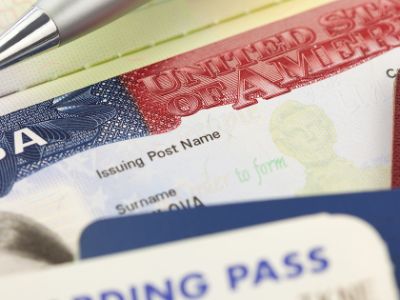Have you immigrated to the United States and are interested in bringing other family members to the country to join you? How to move your family to the United States and the immigration requirements they (and you) need to meet will depend on the family members you’d like to bring over. Below we’ve highlighted some common scenarios and what you’ll need to consider:
I want to bring my spouse to the United States.
First, you need to know how the U.S. government defines a spouse. To qualify as a spouse, you must be legally married — if you have a common-law spouse, whether they qualify will depend on the country’s laws where the marriage took place. Note that same-sex spouses qualify.
If you want to bring your spouse to the United States, follow these steps:
- File a Form I-130, Petition for Alien Relative. Where you mail the petition will depend on where in the United States you reside, so you should check the U.S. Citizenship and Immigration Services website for details.
- If the petition is approved, it’s passed to the National Visa Center (NVC), who will contact you with the case number and ask you to choose an agent to receive all communication about this case. The agent can be you, an attorney or someone else familiar with the case.
- You’ll have to pay fees for filing the petition and processing the application, along with other potential miscellaneous costs.
- You’ll need to submit the required documents, including:
- The visa application.
- An affidavit of support for your spouse.
- Original copies of your marriage certificate, your spouse’s birth certificate, passport and any other necessary civil documents. This includes documents proving that you are either a U.S. citizen or permanent resident (green card holder).
- Your spouse will need to have a medical exam with an authorized doctor and submit the completed paperwork to NVC.
- Once you’ve submitted all documents, the NVC will review them and schedule an interview for your spouse with the appropriate embassy or consulate.
- Your spouse needs to attend the interview, bringing any documents they haven’t already provided.
- You and your spouse will be notified whether the visa has been approved or denied. If the visa is approved, your spouse will receive a passport with their immigrant visa along with a sealed packet containing all application documents. Your spouse will provide this packet to immigration when he or she enters the United States – he or she should NOT open it beforehand.
Note that if your spouse is already living in the United States, you will need to complete additional paperwork, including form I-485, Application to Register Permanent Residence or to Adjust Status.
Where should my spouse live while the visa application is pending?
If you’re a U.S. citizen, have your spouse apply for a nonimmigrant K-3 visa while his or her immigrant visa is in process. That way he or she may be able to move to the United States before their visa application is approved. If you’re a permanent resident, your spouse must remain living outside the country while their visa petition is pending.
These scenarios generally assume that you are a permanent resident of the United States, not a U.S. citizen. Note that immediate relatives (parents, spouses, unmarried children 21 years of age and younger) of U.S. citizens can apply for a visa and not be subject to restrictions.
I want to bring my children to the United States.
The United States government defines your “child” as any of the following:
- Your biological son or daughter, born in or out of wedlock. (If you are the child’s father and the child was born out of wedlock, you’ll need to provide proof of the relationship based on laws of the child’s place of residence.)
- Your step-child, as long as the relationship was created through marriage before the child turned 18.
- Your adopted child, as long as you adopted him or her before the age of 16 and have had legal and physical custody for at least the last two years.
If your child fits one of the definitions above and is younger than 21 or unmarried, follow the same steps that you would for bringing a spouse to the United States.
I want to bring my parents to the United States.
Permanent residents are not able to petition to bring their parents to live permanently in the United States. If you want to bring your parents to the United States, you’ll need to wait until you meet the requirements of becoming a U.S. citizen, including being a permanent resident for at least five years. If you meet the requirements, submit an application and complete the naturalization process, then you can petition for an immigrant visa for your parents once you are an American citizen.
I want to bring my pets to the United States.
Rules about importing pets will vary depending on what state you live in, but in general if you are bringing animals into the United States from another country, you’ll need a health certificate signed by your vet (no earlier than 10 days before travel) that certifies the pet is healthy and able to fly.
If you’re importing a dog, it needs to be at least one month old and have a current rabies vaccine. Cats aren’t required to have rabies vaccines. Visit the CDC website for additional regulations and for information about bringing other animals into the United States.
Once your family has joined you in the United States, there are other issues you’ll want to consider, like education requirements for your kids and health insurance requirements for the entire family. Download our free guidebook on moving your family to the U.S. to learn more.



